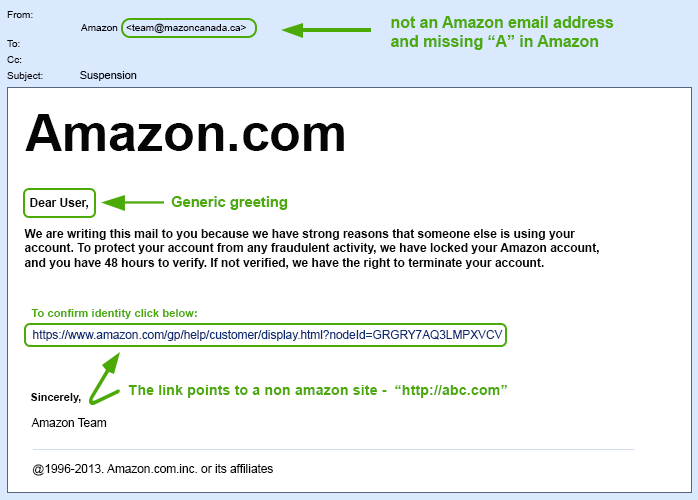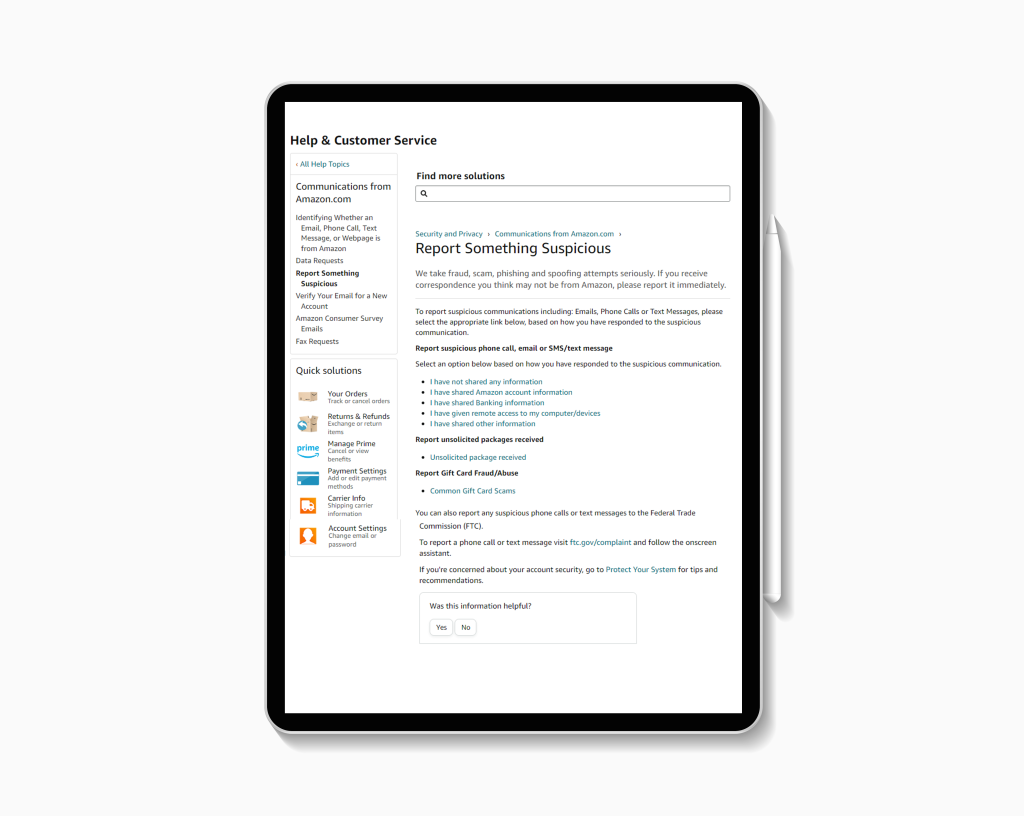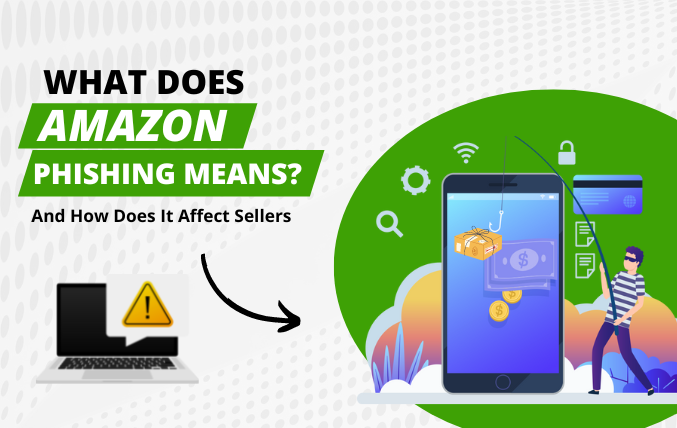How Can Amazon Sellers Prevent themselves from Amazon Phishing?
Email phishing is a cybercrime tactic that involves sending phony emails to victims to get them to click on risky links or divulge sensitive information like credit card numbers and account passwords. Even though some are bogus, con artists with advanced training may produce convincing scam emails that seem to be sent by respected companies like Amazon.
What Do You Understand by Amazon Phishing?
Cybercrime, in general, including phishing, has been categorized. It occurs when a criminal (also known as a phisher) impersonates a person or business to obtain information through calls, emails, fake websites, etc. In recent years, phishers have impersonated several well-known firms, and an increasing number of consumers have fallen for these con games.
One of the most well-known players in the sector, Amazon, is the source of a new phishing effort. You may receive emails from Amazon asking you to click on a link that leads to a website that looks exactly like Amazon. Your private account details and password will be requested here, after which the scammers will utilize them to steal money in any way they see fit. Scammers could also attempt to contact you by SMS or phone.
The content in the Amazon phishing scams is presented as coming from Amazon using the company’s logo. The majority of them take the form of emails. When you click on the links in the emails, malicious information-gathering programs start trying to collect all of your important account information.
These emails usually let customers know they are having trouble processing their bills and must click the provided button, which usually says something like “Login to my account” to make things right. They provide clickable links asking you to provide essential, private information before continuing. Amazon sellers who receive these emails are informed that their Seller Central accounts are at risk or that their payment account information needs to be validated. If not, it may compromise their Amazon product listings’ security.
What Looks Like Amazon Phishing Emails?
To defeat these phishers, you must defend yourself and avoid their traps. Sellers and buyers need to understand how these emails appear to do that.

Because scammers are so skilled at mimicking official Amazon communications, which is at an all-time high, it takes work to spot them. To help you identify a scammer, some specialists have discovered classic symptoms.
One way to spot phishing emails is that they frequently convey a sense of urgency by urging you to click on the link very away, preferably within a day, to fix specific faults in your account. Additionally, the email will use your name to make it appear more official. The website or the link you are being prompted to click on will usually look fake, as the URL will not have “Amazon” anywhere. Sometimes it may have “Amazon” in it, but genuine emails usually only end with “Amazon.”
Characteristics of Amazon Phishing Emails
All internet users, especially those using business equipment or having access to sensitive information, should be able to recognize fraudulent emails in their inboxes. Consumers can identify phishing emails with the use of the indicators listed below:
- An unfamiliar tone or greeting
- Grammar and spelling errors
- Inconsistencies in email addresses, links, and domain names
- Threats or a sense of urgency
- Unusual request
- Suspicious attachments
- Request for Credentials, Payment Information, or Other Personal Details
How Are Amazon Sellers Targeted by Amazon Phishing Scams?
Amazon is a data warehouse where it keeps all of the necessary information and specifics about its users and the platform’s vendors.
- Amazon phishing scams prey on Amazon sellers to steal their account information and access their bank account information and other information.
- Scammers try to access customer information through seller accounts. It takes a while to recover their funds or reverse the consequences of phishing.
- Any links and return email addresses in emails must be sent to sellers and need to be carefully reviewed. When closely investigating them, you may tell that such links go to a bogus website. Hovering over the links is the best way to investigate them; Never, Ever, Ever click on them.
Where Can You Forward Amazon Phishing Emails?
You can file a report if you want to report an amazon phishing email that appears to be suspicious. You can also forward amazon phishing emails and other suspicious forgeries to stop-spoofing@amazon.com.
Email reportphishing@apwg.org with any phishing emails you receive (an address used by the Anti-Phishing Working Group, which includes ISPs, security vendors, financial institutions, and law enforcement agencies). Inform the business or person who was the target of the amazon phishing scam.
How Can You Prevent Amazon Phishing?
By being alert and keeping a critical watch on the emails in your inbox, you may avoid becoming the victim of Amazon phishing scam emails. Always be on the lookout for any obvious warning indicators, and use caution when interacting with any correspondence relating to the security of your Amazon account.
You can help yourself keep an eye out for unusual activity by using anti-track software. Additionally, using a trustworthy password manager and developing strong passwords will stop hackers from breaking into your accounts. The following is a list of the top safeguards against Amazon impostor emails:
- Don’t click on a link.
- Do not dial random numbers.
- Avoid replying to such emails.
- Never reveal any confidential information.
- Follow the newest Amazon phishing scams in the news.
How to Report Amazon Phishing?

You’re not alone if you’ve received phony Amazon phishing emails. Reporting online fraud enables businesses to thwart such assaults against you and other customers. And although it can be challenging to report cybercrime, Amazon makes it simple. Visit Amazon’s customer service page and follow the on-screen instructions to report amazon phishing email.
What you should do if you receive a scam email from Amazon:
- Don’t panic
- Change your passwords
- Contact cybercrime personnels
- Notify your bank
- Limit the damage
- Report & inform Amazon
- Alert others
To Conclude
Buyers and sellers alike are subject to phishing assaults. Phishing assaults hurt Amazon’s reputation because it is a vast platform. There are numerous ways for fraudsters to attempt to contact you. We’ve outlined some simple steps to quickly avoid amazon phishing attacks to help you protect yourself and keep your account and your money secure.
Pay close attention to detail, remember the triggers and warning indicators, and adhere to the above recommendations. You can be confident that you are protected against phishing or only at a minimal risk if you follow these instructions. MMF Infotech, the best amazon marketing agency is always ready to assist you from such scammers. All you have to do is reach out to us, and we’ll smoothen all your amazon related operations.


